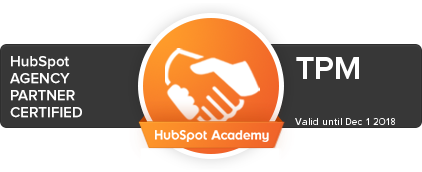B2B Marketing Metrics and Analytics
- Dean Ara
- January 12, 2021

Data scientist and Google Analytics expert Kushal Sharma recently shared the basics of Google Analytics and A/B Testing for marketers with the TPM team.
In his latest post, Kushal builds on these basics to demonstrate how marketers, particularly B2B marketers, can embed measurements in their marketing plans to track every conversion and prove the marketing attribution for every dollar of revenue.
B2B Marketing Metrics and Customer Relationship Management Platforms
Customer relationship management (CRM) is any tool, strategy, or process that helps businesses better organize and access customer data. CRM evolved from Rolodexes to databases and then became even more complicated as technology like Salesforce and SAP enabled CRM data to integrate with everything from finance systems to enterprise resource planning (ERP) to marketing automation.
For marketers, CRM forms are one of the most essential features of any CRM tool and have become the bread and butter of all marketing automation and enterprise marketing. These forms collect valuable information about a prospect and can be used to:
- Segment customers for personalization by gathering information about who they are and what their goals are
- Build strong personas by using progressive profiling to dynamically collect additional data on a visitor who has already provided some basic information earlier
- Gather information that will help the sales process later on
As well as the information that customers provide, CRM forms capture other B2B marketing metrics in hidden fields such as:
- UTM tags
- Cookie values of interest
- Metadata about the campaign that brought the prospect to the form
- URL of the page where the form was filled out (if the same form us used across the website on many pages)

B2B Marketing Metrics Framework for Enterprise Sales
When building any measurement framework for marketing activity that supports enterprise sales — particularly B2B enterprise sales — the minimum B2B marketing metric you should track is the first interaction that adds an email address to your database.
This is especially important in Canada and Europe where there is strict anti-spam and data protection legislation.
Email is still one of the biggest channels for enterprise marketing and one of the most reliable. Understanding which channels lead to an increase in the size of your email database is critical to ensure you can optimize for sources that produce the highest-quality contacts. The easiest way to do this is to ensure that the form you’re using to collect visitor data can also capture the source channel and campaign (using either the Google Analytics cookie or UTM parameters).
Measuring Microconversions in Your B2B Marketing Metrics
Once you know where your lead contacts are coming from, you can start to think about tracking more advanced metrics to answer questions like:
- Is webinar registration an indication of higher intent to purchase?
- Do guides and how-to documents work better for existing customers or prospects?
- Do users who download multiple assets have a higher propensity to buy?
Top Tip: Prospects who fill out a form to request a demo are usually the highest-performing leads.
Automating Leads Passing from Marketing to Sales
Do you have the right processes in place to tag leads handed over from marketing to sales? This is important because if salespeople don’t attach the right lead or contact to the right opportunity, marketing will never know if the lead resulted in a sale — and the marketing attribution model breaks down. It’s best to automate as much of this as possible to take the onus off the sales person.
In B2B marketing metrics, it’s extremely important to group all the leads from the same company under one account. This is because there are usually multiple influencers in any B2B sale. Your sales team may be selling a new marketing technology to the IT buyer in an organization — but the lead may have originated from the marketing buyer who requested the new technology from their IT team.
Finally, make sure your leads in CRM are tagged and segregated by whether the sale is new business, an upsell within an existing account, or a renewals. This is helpful in understanding whether your marketing efforts are helping drive new sales as well as influencing the retention of existing customers.

Embedding B2B Marketing Metrics in a Marketing Plan
Marketers can measure whatever they want but it’s important to know what KPIs you want before you get started. There are three key questions to ask when deciding what to measure:
1. What short-term results do you want to achieve with this campaign?
- Bring additional traffic to the website
- Encourage downloads
- Encourage registration for an event or a webinar
- Encourage a response to a survey
- Move to the next step in their existing sales conversation (opportunity stage progression)
- Start using a feature in a product
2. What’s the next step you want your prospects to take?
- Request a demo
- Agree to a sales conversation
- Sign up for another campaign or initiative
- Provide a higher NPS / CSAT score after using a feature
3. What is the current business-as-usual state of the B2B marketing metric?
- Request a demo: How many demo requests do you get in a week, regardless of the new campaign? This can be compared to the new number once you launch the campaign to see if you succeeded in increasing that number.
- Agree to a sales conversation: How many leads go on to this next step per week, regardless of the campaign? Did the campaign help move more of these leads to the next stage?
Marketing Attribution Models
Attribution models typically assign weight to each interaction in a chain of events so it can decide which one should take a larger share of the final revenue that resulted from that chain.
For example, many businesses track the last event in the sequence as being the event that drove the sale: If a prospect downloaded a guide, watched a video, and finally attended an webinar, the webinar receives attribution for the sale. This is misleading as each of the touchpoints along the journey played a role in influencing the eventual sale.
Other models share a percentage of the revenue with different events based on different hypotheses.
An attribution model can be useful as an internal tool to help secure marketing dollars. However, it should not be used to make decisions on marketing strategy because, in essence, these models often focus on distributing the spoils of the war rather than telling you what helped you win.
Explore more posts in Kushal’s Google Analytics Marketing Metrics blog series:



